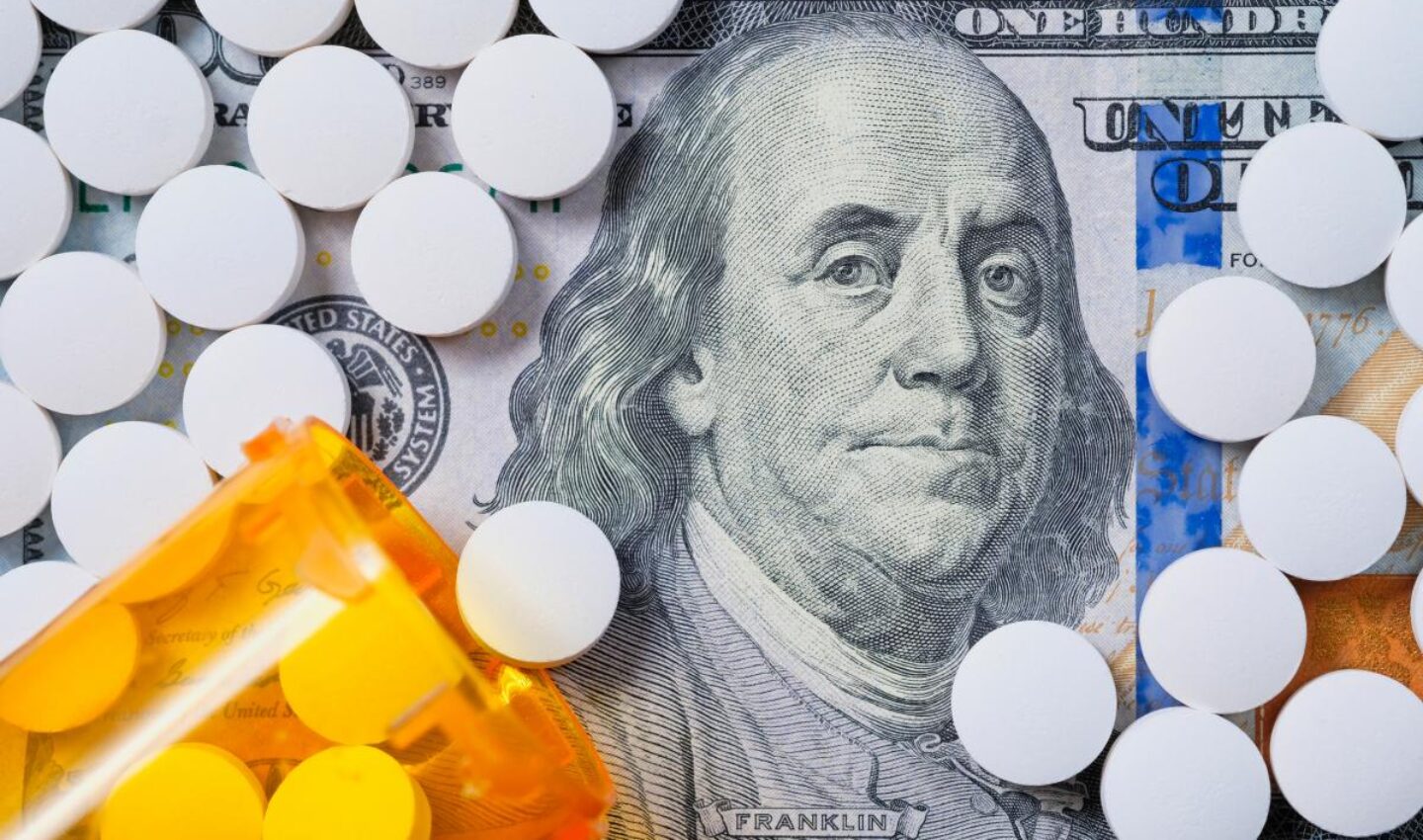Earlier this year, the Department of Health and Human Services (HHS) proposed changes to the current pricing and contracting system for federal health care programs, Medicare Part D and Medicaid.1 This proposal aligns with the Trump Administration’s blueprint for lowering drug prices which we have written about previously.
Over the past decade, drug prices have increased without supporting economic rationale. This has translated to high out-of-pocket costs to Americans, which have been attributed to the current drug rebate system between drug companies and pharmacy benefit managers (PBMs) involving kickbacks to the middlemen.2
As the rebate process currently stands, drug companies set a list price for their respective drugs. Prescription drug rebates are generally paid by a drug company to a PBM in exchange for easier access to drugs via formulary status. The PBM negotiates rebates on behalf of the insurer and shares a portion with the health insurer. The cost that the health insurer pays for the prescription drugs following the rebate is considered the net cost; however, patients end up taking on more of the cost sharing since their co-payment or coinsurance price is based on the list price instead of the net price. For some perspective, the average difference between the list price and the net price after rebate is 26 to 30 percent for Medicare Part D plans.3,4
The proposed rule released in January, Fraud and Abuse; Removal of Safe Harbor Protection for Rebates Involving Prescription Pharmaceuticals and Creation of New Safe Harbor Protection for Certain Point-of-Sale Reductions in Price on Prescription Pharmaceuticals and Certain Pharmacy Benefit Manager Service Fees, would revise current protections under the Anti-Kickback Statute (AKS) to exclude rebates paid by drug companies to PBMs, Medicare Part D plans, and Medicaid managed care organizations (MCOs) and create a “safe harbor” for point-of-sale price reductions offered by drug companies for drugs that are payable under Medicare Part D or by Medicaid MCOs.1,3 By shifting away from the current rebate system, the goal is to lower out-of-pocket costs for patients at the pharmacy. Notably, this will not impact the federal Medicaid Drug Rebate Program.
PBMs have responded to increasing list prices through the negotiation of higher and higher rebates. Nearly every drug company that increased drug prices in January 2019 announced that all (or nearly all) of the increase was being paid to PBMs or insurers as rebates. The HHS proposal would counteract the incentives behind rising list prices by prohibiting drug companies from citing rebates as a rationale to raise list prices. In our existing system, rebates that drug companies pay are kept by PBMs and payers, presumably to pay for the administrative costs of managing the pharmacy benefit and to lower deductibles, rather than being passed on to the patient purchasing the medication through discounts. Therefore, patients with high out-of-pocket costs do not benefit from rebates at the pharmacy. In some cases, a patient’s co-pay can be higher than the net price paid by the health plan after rebates. This proposal would prohibit drug companies from offering rebates, but it is unknown whether this would pressure drug companies to lower current list prices.2,5
Because of the amounts of rebates that can be obtained from high-cost therapies, the current system discourages the use of lower priced generics and biosimilars. For example, plans may relegate generic or biosimilar drugs to a non-preferred tier since they receive high rebates for branded drugs and biologics or they may leverage rebates to ensure the net price of branded drugs and biologics remains less than those of generics or biosimilars, thereby securing preferred status on formularies.
As written, the proposal would only apply to federal health care programs and beneficiaries and expansion to private insurers and commercial insurance would require Congress to pass legislation.
For both Medicaid and Medicare, PBMs would receive fixed payments rather than percentage of utilization-driven rebates from drug companies.6
Medicare patients would see point-of-sale discounts and lower out-of-pocket spending. Out-of-pocket costs may decrease for inexpensive drugs and decrease even more for expensive drugs. However, while individual patients may benefit, there may be a slight increase in premiums for all patients covered by a plan as payers cannot use rebate money to lower premiums. The majority of Medicare beneficiaries, such as the elderly population and vulnerable individuals, may be insulated from these costs because about 50 percent of beneficiaries have drug coverage through Medicare Advantage plans that use federal dollars to offset Part D premiums, another 10 percent may receive benefits through employers who subsidize premiums, and financially vulnerable individuals qualify for low-income subsidies where the federal government pays for all or nearly all of their Part D premiums. The potential for net savings is not clearly defined for Medicare beneficiaries.7
Although stakeholders may be opposed to changes, the appetite for affordable drugs for American patients is high. Multiple stakeholders have released statements in response to this proposal. There has been push back on the lack of alternatives to rebates, since drug companies do not offer up-front discounts. There are questions as to what lever payers would use to lower drug prices if this proposal is implemented and there are questions as to what would be the new role of the PBMs. The proposed rule supports the goals outlined in the Trump’s Administration drug pricing blueprint released in May 2018. If implemented, it would take effective effect beginning on January 2020. HHS notes that drug companies may make changes sooner.1,2
1Fraud and Abuse; Removal of Safe Harbor Protection for Rebates Involving Prescription Pharmaceuticals and Creation of New Safe Harbor Protection for Certain Point-of-Sale Reductions in Price on Prescription Pharmaceuticals and Certain Pharmacy Benefit Manager Service Fees. [Vol. 84] Federal Register [No. 25] February 6, 2019. Table 2.A. Pg. 2357.
2Fact Sheet: Trump Administration Proposes to Lower Drug Cost by Targeting Backdoor Rebates and Encouraging Discounts to Patients [article on the internet]. Washington D.C.: Department of Health and Human Services. 2019 Jan 31 [cited 2019 Mar 6]. Available from: https://www.hhs.gov/sites/default/files/20190131-fact-sheet.pdf.
3HHS proposal tackles drug rebates [press release on the internet]. Providence (RI): HealthExec; 2019 Feb 4. [cited 2019 Mar 5]. Available from: https://www.healthexec.com/topics/policy/hhs-proposal-tackles-drug-rebates.
4Dieguez G, Alston M, Tomicki S. A primer on prescription drug rebates: Insights into why rebates are a target for reducing prices [article on the internet]. Seattle (WA): Milliman; 2018 May 21 [cited 2019 Mar 6]. Available from: http://us.milliman.com/insight/2018/A-primer-on-prescription-drug-rebate….
5Dusetzina SB, Bach PB. Prescription Drugs-List Price, Net Price, and the Rebate Caught in the Middle. JAMA. 2019 Mar 6.
6Swetlitz I, Florko N. In bold new proposal, Trump administration pitches an end to certain drug rebates [article on the internet]. Boston (MA): Stat News; 2018 Jan 31 [cited 2019 Mar 5]. Available from: https://www.statnews.com/2019/01/31/in-bold-new-proposal-trump-administration-pitches-an-end-to-certain-drug-rebates/.
7Trisk EE, Goldman D. Ending drug rebates will increase Medicare Part D premiums. Most seniors will be insulated from it [article on the internet]. Boston (MA): Stat News; 2019 Feb 21 [cited 2019 Mar 5]. Available from: https://www.statnews.com/2019/02/21/ending-drug-rebates-part-d-premiums/.


